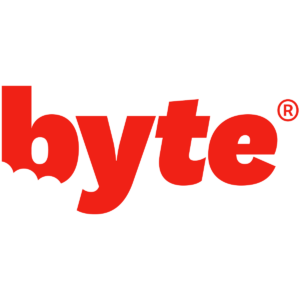Lingual braces vs Invisalign – what are the differences and the similarities, and which teeth straightening option should you choose?
In this article, we are going to compare traditional lingual braces and Invisalign clear aligners side by side, so that you can gain a good level of understanding of what makes either option a good choice. There are advantages to both, but more than likely one teeth straightening treatment is going to appeal more to you than the other, once you are familiar with the details of what each form of teeth straightening therapy involves.
Without further ado, let us get right to it.
What lingual braces and Invisalign have in common
In terms of the results you can expect from your teeth straightening treatment, lingual braces and Invisalign, which are among the highest quality clear aligners available, are very similar. This might in fact be why choosing between the two is so difficult. Whether you choose lingual braces or Invisalign for your treatment, you can expect to end up with straighter teeth, a better and more comfortable bite, and an overall more attractive smile.
Thanks to orthodontic innovation and breakthrough new technologies, lingual braces and Invisalign clear aligners are both among the most discreet teeth straightening systems available today. What’s more, lingual braces and Invisalign are just about equally invisible – lingual braces because they are hidden behind the teeth, and Invisalign thanks to the clear material the aligners are made of, which makes them almost completely transparent.
In principle, lingual braces and Invisalign removable aligners work the same way. The objective is to slowly move the teeth into a more straight formation.
Differences between lingual braces and Invisalign
In terms of appearance and approach, lingual braces and Invisalign are as different as night and day.
Lingual braces are akin to traditional metal braces, but have many advantages over them. Like traditional braces, they tend to be made of metal brackets and wires, but unlike traditional braces they are attached to the back of the teeth rather than the front, meaning you avoid the typical braces look and can go about getting your teeth straightened without anyone knowing.
Lingual braces are relatively expensive as compared to Invisalign, since installing and adjusting their brackets and wires as the treatment progresses is difficult and requires highly specialised training. Not many orthodontists are able to do it.
Clear aligners like Invisalign are the newest type of treatment for misaligned teeth, and has skyrocketed in popularity over the past few years. Invisalign invisible aligners are available via specially trained Invisalign dentists and orthodontists in many locations worldwide, which means that the Invisalign treatment is extremely accessible.
The Invisalign process involves wearing sets of custom-made clear aligners for one to two weeks at a time for the duration of your treatment.
Unlike lingual metal braces, which are fixed with brackets to the back of your teeth until the end of treatment, Invisalign clear plastic aligners are removable, so you can take them out every time you eat or brush your teeth. Being able to remove the aligners is great in terms of staying on top of your oral hygiene throughout your treatment, but keep in mind that the aligners still have to be worn for 22 hours a day in order to be effective.
Pros and cons of lingual braces vs Invisalign clear aligners
Still not sure which of the two orthodontic treatment options we are discussing is right for you? Well, let us take a closer look at the pros and cons of each.
Lingual braces pros
- Since they are hidden behind your teeth, lingual braces are 100% invisible
- Lingual braces are able to handle moderate to severe dental misalignment options, which patients dealing with these issues can surely appreciate
Lingual braces cons
- Lingual braces are usually more expensive than Invisalign
- Depending on where you live, finding an orthodontist near you who possess the expertise can prove a challenge
- Some patients report finding lingual braces irritating for their tongue
Invisalign pros
- Invisalign treatment is relatively inexpensive, and in many cases the trays are covered by insurance
- Invisalign treatment is fast as compared to other orthodontic treatments – 12 to 18 months is usually all it takes to move the teeth into their desired positions
- Invisalign aligners are easy to get, thanks to the many Invisalign-trained dentists and orthodontists worldwide
- Invisalign braces are discreet and all but invisible
- Many patients appreciate the fact that Invisalign trays are removable and can be taken out every time the patient needs to eat, drink or brush their teeth
Invisalign cons
- Invisalign trays are not quite as invisible as lingual braces, as they are merely transparent rather than fully hidden
- The Invisalign treatment is only able to address minor to moderate dental misalignment, so not every willing patient is a good candidate for Invisalign
Lingual braces vs Invisalign FAQ
Are lingual braces better than Invisalign?
Invisalign and lingual braces are both incredibly effective when it comes to helping people achieve straighter teeth, a better bite and an overall better smile, but which one is going to be the most effective for you depends on a whole host of things, including your budget, your teeth straightening goals and the severity of your teeth misalignment.
While Invisalign and lingual braces are able to provide you with equivalent results if your teeth misalignment issues are minor, more severe cases of overbite, underbite, cross bite or crowding may achieve better results with lingual braces. Lingual braces are as forceful in their alignment as traditional braces, but have the advantage of being much more discreet since they are essentially hidden behind the teeth.
Are lingual braces cheaper than Invisalign?
No.
Although prices for lingual braces (and prices for Invisalign) vary form place to place and from orthodontist to orthodontist, lingual braces tend to be more expensive than Invisalign. The primary reason for this is that not many orthodontists possess the specialist training required to be able to install, adjust and monitor lingual braces, whereas Invisalign aligners are much more commonly available.
Do lingual braces take longer?
In most cases, yes, lingual braces take much longer than Invisalign.
There are multiple reasons for this. One obvious reason is that, in order to be a good candidate for Invisalign, your teeth misalignment problems cannot be too severe, meaning there is less misalignment to correct. With Invisalign aligners, patients typically start seeing results within just a few weeks of wearing their clear aligners, and the entire Invisalign treatment time tends to be between 12 and 18 months.
By contrast, lingual braces as well as other traditional braces tend to take longer and sometimes have to be worn for 2-3 years before the full results are achieved. However, lingual braces are able to connect more severe dental misalignment than Invisalign, so it may not be entirely fair to compare the two.
Which is more effective, braces or Invisalign?
For a lot of patients, lingual braces vs Invisalign are equally as effective.
Where the difference is felt is in the amount of time the treatment takes. Invisalign treatments tend to yield results much quicker, while lingual braces are a more effective choice if you are dealing with more severe crowding or misalignment problems.
Which is more effective, braces or Invisalign?
For a lot of patients, lingual braces vs Invisalign are equally effective.
Where the difference is felt is in the amount of time the treatment takes. Invisalign treatments tend to yield results much quicker, while lingual braces are a more effective choice if you are dealing with more severe crowding or misalignment problems.
Closing thoughts
Have you decided on your orthodontic treatment yet?
One thing is certain – lingual braces and Invisalign are both fantastic options, and you cannot really go wrong with either option.
In most cases, if your dental misalignment issues are minor and you have insurance that covers Invisalign, clear aligners is the perfect choice. If, on the other hand, your dental issues are too severe for Invisalign trays to handle, finding yourself a reputable orthodontist who possesses the appropriate skills, lingual braces might be your best option.



